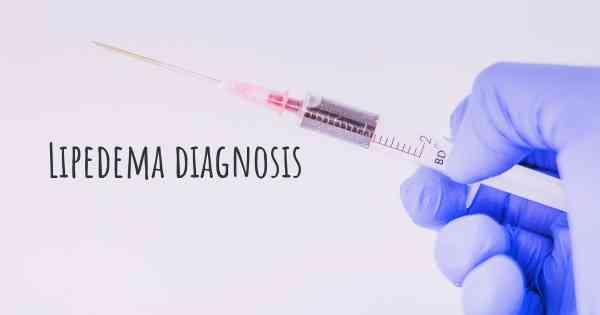How is Lipedema diagnosed?
See how Lipedema is diagnosed. Which specialists are essential to meet, what tests are needed and other useful information for the diagnosis of Lipedema

How is Lipedema diagnosed?
Lipedema is a chronic condition characterized by an abnormal accumulation of fat cells, primarily in the lower body, such as the hips, thighs, and buttocks. It predominantly affects women and is often misdiagnosed or overlooked due to its similarities with obesity or lymphedema. Proper diagnosis is crucial for effective management and treatment of the condition.
Medical History: The diagnostic process for lipedema typically begins with a comprehensive medical history evaluation. The healthcare provider will inquire about the patient's symptoms, family history, and any previous diagnoses or treatments related to their condition. This information helps to establish a baseline and identify potential risk factors.
Physical Examination: A thorough physical examination is conducted to assess the patient's body composition and identify specific characteristics associated with lipedema. The healthcare provider will visually inspect the affected areas, looking for disproportionate fat distribution, increased adipose tissue, and signs of inflammation or tenderness. They may also perform palpation to assess the texture and consistency of the fat deposits.
Diagnostic Criteria: Lipedema is diagnosed based on specific diagnostic criteria established by medical professionals. These criteria include the following:
- Disproportionate Fat Distribution: Lipedema typically presents as a symmetrical accumulation of fat in the lower body, sparing the feet. The upper body remains unaffected, creating a distinct "column" or "bracelet" appearance.
- Orthostatic Edema: Patients with lipedema often experience swelling in the affected areas, which worsens with prolonged standing or sitting. This edema is not typically present in the morning and may improve with elevation or rest.
- Tissue Texture Changes: Lipedema fat is characterized by a soft, "spongy" texture that feels different from regular subcutaneous fat. It may be tender to touch and easily bruised.
- Pain and Sensitivity: Lipedema can cause pain, tenderness, and increased sensitivity in the affected areas. Patients may experience discomfort during physical activities or even with light touch.
Additional Tests: In some cases, additional tests may be performed to rule out other conditions or assess the severity of lipedema. These tests may include:
- Imaging Studies: Ultrasound or MRI scans can help visualize the fat distribution and rule out other potential causes of the symptoms.
- Lab Tests: Blood tests may be conducted to evaluate hormone levels, rule out underlying medical conditions, or assess the patient's overall health.
Consultation with Specialists: Depending on the patient's specific symptoms and medical history, they may be referred to specialists such as endocrinologists, vascular surgeons, or lymphedema therapists for further evaluation and management.
It is important to consult with a healthcare professional experienced in diagnosing and treating lipedema to ensure an accurate diagnosis. Early diagnosis can help prevent progression of the condition and guide appropriate treatment strategies.
Vascular surgeon is essential to rule out lymphedema and venous insufficiency.
There is no need for any other imaging testing, but, some testing can help to assure the final diagnosis and even be used as progression meter.
DEXA is a good imaging exam which has a formula to diagnose lipedema.
Any imaging like tomography or ressonance can be used.
We recently created a protocol for lipedema diagnosis with ultrasound.
Posted Jan 13, 2019 by Lipedemusikim 2500
Posted Jan 14, 2019 by Annatogu 1800
Posted Jan 14, 2019 by Camilla 1700
Posted Jan 17, 2019 by mkokkinouboege 2530








